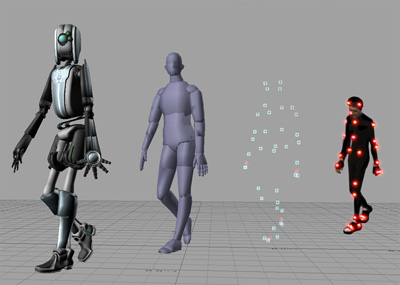Definition, Process, and Applications of Digital Animation – In the world of visual storytelling and creative expression, digital animation has emerged as a powerful tool that captivates and engages audiences of all ages. This article delves into the realm of digital animation, shedding light on its definition, mechanics, versatile applications, and the diverse elements that contribute to its magic.
Understanding Digital Animation
Digital animation refers to the process of creating moving images through the use of digital technology. It involves manipulating visual elements to simulate motion, bringing characters, objects, and scenes to life on screen. Unlike traditional animation techniques that rely on hand-drawn frames, digital animation harnesses the capabilities of computers and software to generate fluid motion sequences. slot gacor
Working of Digital Animation
The process of digital animation involves several key steps:
- Concept and Storyboarding: The journey begins with conceptualizing the story and creating a storyboard that outlines the sequence of events and visuals. premium303
- Character and Asset Design: Artists design characters, objects, and backgrounds that will populate the animation, paying attention to details that contribute to their personality and environment.
- Digital Modeling and Rigging: Digital models of characters and objects are created using 3D modeling software. Rigging involves adding a skeletal structure that enables the characters to move realistically.
- Animation: This phase involves animating characters and objects by manipulating their digital models. Keyframes are set to define the main poses, and the software interpolates between them to create smooth motion.
- Texturing and Lighting: Textures are applied to the models to give them realistic surfaces, while lighting is used to create mood and atmosphere within the scenes.
- Rendering: The animation is rendered to create the final frames. This process can be time-consuming, as it involves calculating the appearance of each pixel in the scene.
- Post-Production: Additional effects, color grading, and sound are added to enhance the final result.

Applications of Digital Animation
Digital animation has a wide range of applications across various industries:
- Entertainment: It is extensively used in creating animated films, TV shows, and web series that entertain and engage audiences.
- Gaming: Animation is a cornerstone of the gaming industry, breathing life into characters, environments, and cinematic sequences.
- Advertising: Digital animations are employed in creating eye-catching and memorable advertisements that communicate messages effectively.
- Education: Educational animations simplify complex concepts, making learning more engaging and accessible.
- Virtual Reality (VR) and Augmented Reality (AR): Digital animation enhances the immersive experiences of VR and AR applications, making them more realistic and interactive.
Elements of Digital Animation
Digital animation encompasses various elements that contribute to its visual appeal and storytelling prowess:
- Character Animation: The movement and behavior of characters are essential elements that convey emotions and narratives.
- Visual Effects (VFX): VFX add magical and dynamic elements to animations, ranging from explosions to supernatural phenomena.
- Backgrounds and Environments: Detailed backgrounds and settings immerse viewers in the world of the animation, creating a sense of place.
- Motion and Timing: The timing of movements, transitions, and actions dictates the flow and pacing of the animation.
Conclusion
Digital animation has revolutionized the world of visual storytelling, offering a dynamic and captivating medium for artists, storytellers, and creators to express their ideas and narratives. From entertainment to education, the applications of digital animation are vast and impactful.
By harnessing the power of technology, artists can bring their visions to life in ways that captivate and resonate with audiences across the globe. The intricate blend of creativity, technology, and storytelling that digital animation embodies has paved the way for a new era of visual communication and artistic expression.